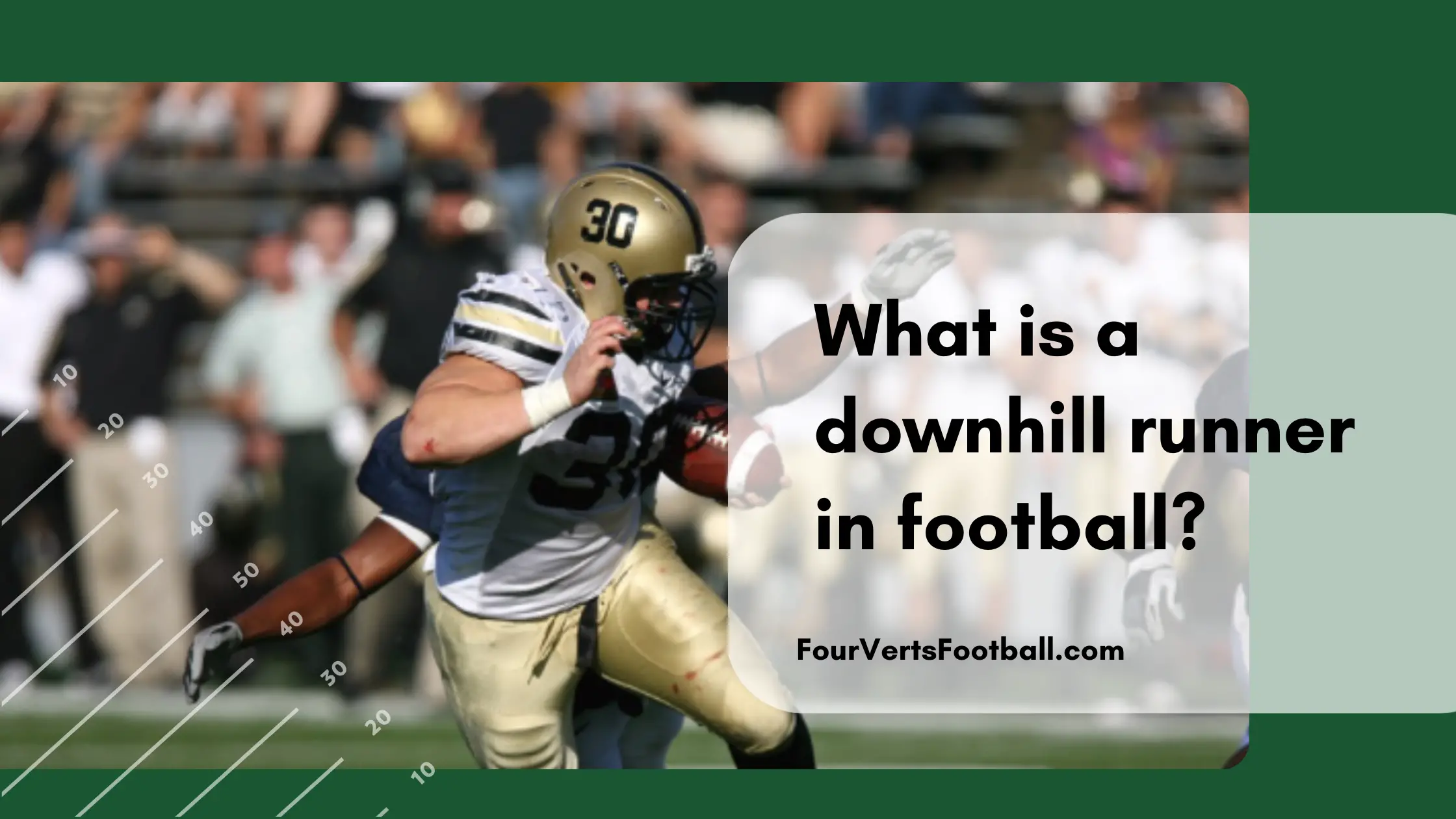A downhill runner in football refers to a player that generally runs forward as opposed to side to side. These players are much more likely to try and run through defenders than to juke or cut around them.
Generally speaking, when football fans use the term downhill runner they are speaking about physical running backs. These players will get the ball and travel directly downfield regardless of who is in their way.
This style of running back is very similar to a power back. In most cases, downhill runners are going to thicker, bulkier runningbacks who thrive on fighting through contact.
Non-downhill runners tend to run much more laterally looking for a hole in the defense to run through. These types of backs will often run throughout the backfield juking defenders in hopes of breaking off a big gain.
While downhill runners will typically hit their intended hole regardless of the defenders there in an attempt to run right through them.
This results in downhill runners having very few negative plays. But on the other hand, these physical running backs are generally less likely to break off big runs for touchdowns.
Though it is not always the case downhill runners do not tend to be great receivers. These players tend to primarily benefit their team in the run game.
While scatbacks that often avoid contact tend to be good receivers out of the backfield.
For this reason, smaller more elusive backs tend to play the majority of third-down plays.
Key Traits Of Downhill Runners
Now that you’ve learned what a downhill runner is you may be wondering what characteristics separate these players from their peers.
Trucking Ability
One trait that is common amongst these north-south running backs is their ability to truck defenders.
Trucking in football refers to the act of running a defender over as they attempt to tackle you. There is no elusiveness involved in trucking a player, the two will simply run directly into one another.
Downhill running backs are known for their strength and size which improves their ability to truck defenders. In most cases, trucking is going to occur when the running back faces up against a linebacker or defensive back.
These players tend to be smaller than the larger running backs in the NFL meaning that using their size is a good option.
If a running back attempted to truck a defensive tackle that would not go very well for him.
Stiff Arms
The stiff arm is another go-to tool for north-south runners. These players tend to use the stiff arm when they are facing a one on one against a defender.
Wide receivers and scatbacks typically try to make a hard cut or juke in these situations but that isn’t the case for downhill backs.
These players will use their size and reach to keep the defender at a distance in which they cannot make a tackle.
If the defender comes closer to the back he will have an opportunity to push the player to the ground via his stiff arm.
Since these running backs are so strong there are often able to do just that. Several famous stiff arms have occurred with downhill back Derrick Henry when he finds himself alone with a defender.
Balance And Strength
Two more key traits of these running backs are balance and strength. On top of being physical with defenders, these players are also incredibly hard to bring down.
Oftentimes when these backs get the ball for a carry the whistle will be blown when the forward progress is stopped as opposed to them getting tacked.
It will often take several defenders to stop the running back’s momentum to the point where a whistle is blown to stop the play.
On some plays, this ability to stay on their feet will allow their offensive lineman enough time to “push the pile”.
This involves the running back standing upright in the middle of the pile while players on both teams push the pile in order to move the running back in their desired direction.

